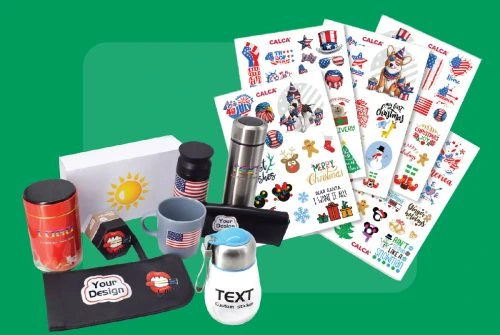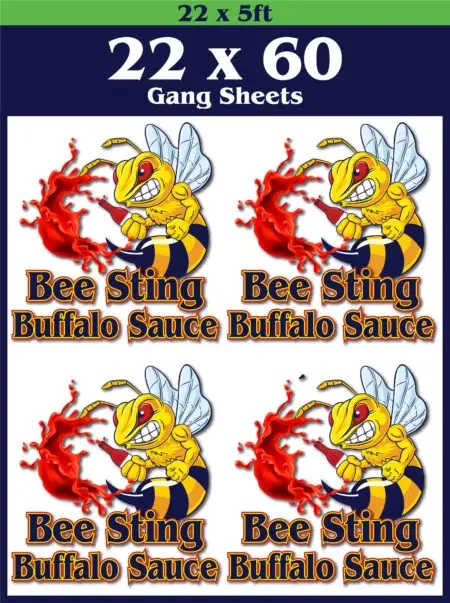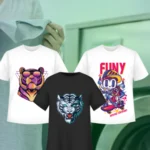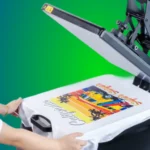DTF vs Sublimation Printing: Which Is Better For You?
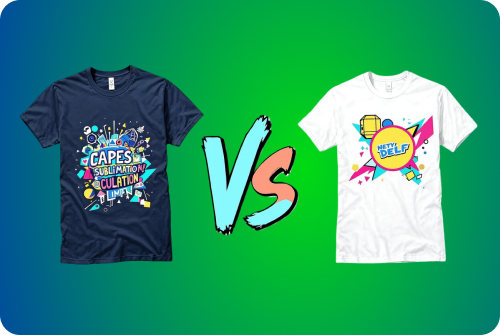
Choosing between DTF vs sublimation printing can redefine your shop’s efficiency and output quality. Whether you’re integrating digital printing technology for on-demand custom tees or expanding a thriving printing business, mastering each printing technique is crucial. DTF printing offers fabric versatility—working on cotton, polyester, and blends—while sublimation printing delivers photo-real results on polyester substrates. This side-by-side comparison will explain how direct to film printing streamlines multi-color jobs and why a sublimation printing machine paired with premium sublimation ink excels at seamless transfers. You’ll also learn how to maintain your printer heads, reference your printers service manual, and choose the right heat press machine. Dive in to understand each method’s workflow, pros and cons, and operational costs—so you can confidently select the best solution for your production line.
What This Guide Covers
- Core definitions of direct to film printing and sublimation printing
- Advantages and drawbacks of each printing method
- Side-by-side comparisons on quality, cost, durability, and more
- Recommendations for beginners, pros, and different applications
Why This Comparison Matters
Choosing the wrong printing technique not only slows production but also drains your budget on unnecessary consumables and maintenance. When you weigh DTF printing against sublimation printing, you’re making a strategic decision about capital allocation—whether that’s investing in a mid-range DTF printer with its adhesive powder requirements or a precision sublimation printing machine paired with premium sublimation ink. The right choice impacts everything downstream: how often you service your printer heads, the frequency of referencing your printers service manual, and even your staffing needs for post-press workflows.
For a printing business focused on garment versatility—cotton tees, poly blends, or dark fabrics—direct to film printing may streamline orders and reduce pre-treatment steps. Conversely, if your operation demands ultra-vivid, photo-quality prints on light polyester, the sublimation printing process coupled with a reliable heat press machine could offer superior washfastness and color saturation. By understanding dtf vs sublimation, you’ll optimize supply costs, minimize downtime, and ensure your shop delivers consistent, high-quality results—keeping clients happy and your bottom line healthy.
What is DTF (Direct to Film) Printing?
How DTF Works
DTF printing, or direct to film printing, is a versatile printing method that uses pigment-based inks to lay a design onto a specially formulated film. Here’s how the dtf printing process works in practice:
- A DTF printer equipped with CMYK and white inks prints your full-color artwork onto a direct to film printing film.
- While the inks are still wet, adhesive powder is applied evenly over the printed surface, then gently shaken off to leave a fine, consistent coating.
- The film is heat-cured—either with a heat press machine or curing tunnel—melting the powder so it adheres to the ink as a strong, tacky layer.
- Finally, you position the film on your chosen garment—cotton, polyester, blends, or even canvas and hard substrates—and apply the heat press at the correct temperature and pressure. The heat activates the adhesive, bonding the design directly to the fabric’s surface.
This process delivers vibrant, opaque prints that stand out on dark and light fabrics alike, making DTF printing a go-to choice for custom apparel, promotional items, and small-batch jobs. Plus, because it bypasses the need for pre-treatment on garments, it streamlines production and reduces setup time, ideal for busy shops and on-demand printing businesses.
Pros of DTF Printing
- Works on any fabric type—cotton, polyester, blends
- No pre-treatment needed on garments
- Vibrant colors on dark and light materials
- Durable washability when pressed correctly
Cons of DTF Printing
- Requires additional curing station or oven
- Powder handling adds cleanup
- Films and adhesive powder incur extra supply costs
What is Sublimation Printing?
Sublimation printing uses heat to convert solid sublimation ink into gas, embedding dyes into polyester fibers or coated substrates.
How Sublimation Works
- Print mirrored designs onto sublimation paper using a sublimation printing machine and sublimation ink.
- Align paper with the polyester garment or coated item.
- Apply a heat press machine at high temperature and pressure, triggering sublimation.
- Remove paper to reveal embedded, full-color graphics.
Pros of Sublimation Printing
- Produces seamless, photo-quality prints
- No feel or hand—graphics become one with the fabric
- Excellent washfastness and color vibrancy
- Low maintenance—no pre-treatment or powder
Cons of Sublimation Printing
- Limited to polyester or polyester-coated items
- White or light-colored substrates only
- Initial cost: sublimation printing machine and heat press investment
Also Read – Top Custom Printed Apparel Trends
DTF vs Sublimation: Key Differences
Fabric Compatibility
DTF printing works on cotton, polyester, nylon, spandex, and blends. In contrast, sublimation printing demands 100% polyester or specially coated surfaces.
Print Quality and Finish
- DTF printing process yields opaque, vibrant prints with a slightly raised feel.
- Sublimation printing process offers seamless, silky graphics but only on light polyester.
Durability and Washability
DTF printing withstands 50+ washes with minimal fading. Meanwhile, sublimation printing produces extremely wash-fast prints that resist cracking or peeling indefinitely—provided you stay on polyester.
Color Range and Vibrancy
DTF’s pigment inks deliver bold hues on any fabric. Sublimation inks excel at gradient blends and photographic detail but require polyester’s receptive fibers.
Cost of Equipment and Supplies
DTF vs sublimation initial costs: A mid-range DTF printer plus curing station runs $2K–$5K; sublimation printers plus a sublimation printing machine and heat press average $3K–$8K.
- Ongoing costs: adhesive powder, transfer films, and pigment inks versus sublimation ink and sublimation paper.
Ease of Use and Learning Curve
DTF’s multi-step dtf printing process—print, powder, cure, press—demands precise timing and equipment. Conversely, sublimation’s sublimation printing methods simplify to print-and-press, but require strict temperature control and fabric specificity.
Environmental Considerations
Pigment inks for DTF printing typically generate less volatile organic compounds. However, both methods consume energy via heat press machines and produce one-time media waste (films or paper).
Which Printing Method Is Right for You?
For Beginners or Small Businesses
If you need versatility and lower printer costs, a DTF printer with minimal pre-treatment suits diverse fabrics.
For Professional or High-Volume Printing
Shops already invested in polyester POD services benefit from sublimation printing for top-tier print quality, especially for sportswear and promotional mugs.
For Custom Apparel vs Promotional Items
- DTF printing excels in small batches of mixed fabric garments.
- Sublimation printing process print shines on white polyester athletic wear or coated substrates like signage and cotton jackets? Not cotton, but rigid items using sublimation.
Also Read – Common UV DTF Transfer Mistakes and How to Avoid Them
Conclusion
Both DTF printing and sublimation printing serve indispensable roles in today’s printing industry, each tailored to specific applications and fabric types. If you need vibrant, durable designs on cotton, blends, or dark garments, a DTF printer with its straightforward dtf printing process and robust adhesive powder workflow delivers quick turnarounds without pre-treatment. Conversely, when your goal is photo-quality, full-bleed graphics on polyester or coated substrates, investing in a sublimation printing machine, high-performance sublimation ink, and a precision heat press machine ensures unmatched print quality and washfastness.
Understanding DTF vs sublimation empowers you to optimize equipment choices—from managing printer heads maintenance to consulting your printers service manual—and align your workflow with customer demands. Whether you’re expanding a custom apparel lineup, exploring promotional merchandise, or integrating a dtg printer ink solution alongside these methods, selecting the right printing technique will maximize efficiency, control costs, and elevate your printing business to deliver exceptional results every time.
FAQs About DTF and Sublimation
Can You Use Sublimation on Cotton?
No—sublimation printing requires polyester fibers or coated substrates. For cotton, turn to DTF printing or DTG printer ink solutions.
Is DTF More Durable Than Sublimation?
DTF printing yields flexible, machine-washable prints, but true sublimation embeds pigments into fibers for arguably superior durability—if you stay on polyester.
Which is better, DTF or sublimation?
It depends on your needs: Choose DTF printing for multi-fabric versatility and bold colors. Opt for sublimation printing when you need seamless, photographic-quality prints on polyester.
What lasts longer, DTF or sublimation?
Both offer excellent longevity, but sublimation’s dye infusion prevents peeling, making it virtually permanent on compatible substrates.

